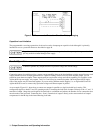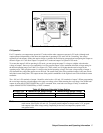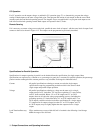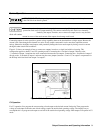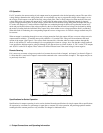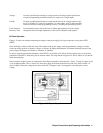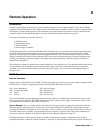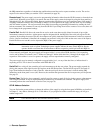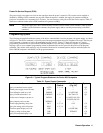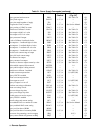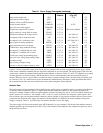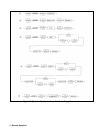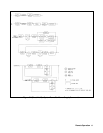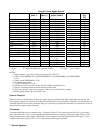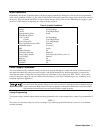
Remote Operation
64
the SRQ annunciator regardless of whether the condition that caused the service request continues to exist. The service
request is also removed when you send the "CLR’’ command (see page 76).
Remote/Local. The power supply can receive programming information either from the GP-IB (remote) or from the front
panel (local). When the power supply is in remote, the state of the supply cannot be changed by using the front panel keys,
although the LCL key will remain enabled. Remote operation takes precedence over local operation, hence if the supply is
accepting commands remotely and you attempt to change it to local operation, the supply will not allow any local settings
and will remain in remote. You can prevent the front panel from sending programming information by sending the local
lockout command. This command is sent only from the GP-IB. If you change from local to remote or vice-versa, there will
be no change in the programmed settings.
Parallel Poll. Parallel Poll allows the controller to receive at the same time one bit of data from each of up to eight
instruments connected to the bus. Agilent power supplies designate bit #6, the RQS bit of the serial poll register for this
operation. By checking the status of this bit, the computer can quickly determine which instruments on the bus requested
service. Once an instrument is identified, the computer can perform a serial poll to find out the exact cause of the request.
Parallel Poll does not reset this service request bit (RQS) in the power supply.
Note IEEE-488 does not define what data an instrument should put on a bus in response to parallel poll. Many
instruments such as Agilent Technologies power supplies indicate the state of their RQS bit, but the
operator should not assume that all instruments on the bus respond to parallel poll with their RQS bit.
Unless remotely configured, the power supply will respond with a 1 on one of the GP-IB data lines if it is requesting
service and its address is between 0 and 7. Addresses 0 through 7 define which data line (1 through 8) the supply will
respond on. If the address is set to 8 or greater, the supply will not respond unless remotely configured.
The power supply may be remotely configured to respond with a 0 or 1, on any of the data lines, to indicate that it is
requesting service. This is done in accordance with IEEE-488 1978.
Serial Poll. In a serial poll, the controller polls each instrument on the bus one at time. The power supply responds by
placing the contents of the eight-bit serial poll register on the GP-IB data lines. The Serial Poll register is discussed on
page 78 and defines the function of each of the bits. After the serial poll, the service request is cleared and the SRQ
annunciator at the front panel is reset (off). However, the condition that generated the service request may still be present.
See page 79.
Device Clear. The Device clear command is typically used in systems to send all devices in the system to a known state
with a single command. It may be implemented as an addressed or an unaddressed command. The power supply CLR
command performs the same function as Device Clear (see page 76).
GP-IB Address Selection
You can find out the present address or change the address of the supply by using the front panel ADDR key as described
in Chapter 3. Any address 0 through 30 is a valid address. If you program an address outside this range you will get a
number range error.
Note Care should be taken to not select the controller address.



